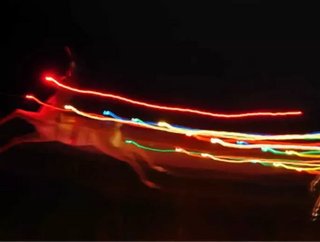Hydrogen gas gets reindeer flying

Make sure to check out the latest issue of Energy Digital magazine
By Deb Hodgkin
There is a very good reason Santa lives at the North Pole – that is the native habitat of the Flying Reindeer, Rangifer tarandus volaris. Without these unique creatures Santa could not make it around the world to deliver presents.
While there are many flying animals that could help Santa pull the sleigh, reindeer have the advantage that they are already well adapted to extreme cold because they live in Arctic regions. This allows them to fly very high and take advantage of the thinner atmosphere to go quickly.
Hydrogen lift
The Flying Reindeer have co-opted normal ruminant anatomy to achieve lift. Ruminants like cows have four stomachs to help them break down reindeer grass and especially cellulose. However, in areas where reindeer live they have had to switch their diet because of the very sparse vegetation.
Much of Scandinavia was covered by glaciers in the last ice age which scoured away the arable soil, leaving very old crystalline rocks. These rocks support lichen, the main diet of the reindeer. The lichen is also breaking down the rocks, which contain many mineral deposits including iron, copper, nickel, zinc, silver and gold, and the reindeer eat large amounts of metals along with their normal food.
Metals react with acid, including stomach acid, to produce hydrogen gas, and when they want to fly the Flying Reindeer collect and store this gas in another of their stomachs which is able to greatly enlarge. Hydrogen is of course lighter than air, and allows the reindeer to lift in the same way as Zeppelins did.
Forward movement
Once in the air, the reindeer need to move forward. They do this by taking advantage of a cold weather adaptation, their thick fur coat. The Flying Reindeer have developed the coat on their legs to be extremely thick and long, with dense matted inner fur and long smooth guard hairs as an outer layer. This configuration allows their legs to act as oars or paddles and they can ‘row’ through the air.
Lichen light
The Flying Reindeer has another advantage for Santa, although technically it is not the reindeer but their food. Many of the lichens the reindeer eat are phosphorescent, which means they glow in the dark. In winter reindeer find their food by using their noses to push aside the snow covering the lichens.
This means they are rubbing their noses across the lichen and many small glowing particles get stuck to their nose and muzzle. The effect looks as if their nose is glowing and allows them to see at night.
Deb Hodgkin, based in Australia, is a kids' science blogger, science teacher, mum to two, and creator of the website www.science-at-home.org .






